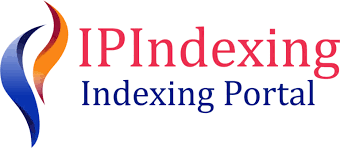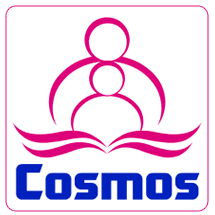Role of Co-Curricular Activities in Students’ Behavior Formation at Secondary School Level
Role of Co-Curricular Activities in Students’ Behavior Formation
Keywords:
Co-curricular Activities, Students Behavior Formation, Academic Performance, Secondary SchoolAbstract
The study was conducted to check the role of co-curricular activities in students’ behavior formation at secondary school level. The study descriptive in nature and survey method used to collect the data. The population was all of the secondary level students of Tehsil Sehnsa of district Kotli AJ&K. The total population of Secondary school students were 302. Simple random sampling technique was used to draw the sample. Five-Point Liker Scale questionnaire was developed for students and teachers. SPSS (Statistical Software for Social Sciences) was used to examine the data in terms of frequency and percentage. It was found that co-curricular activities develop students’ time management skills. Moreover, it helps students to complete their work within time. Co-curricular activities help students to focus their timely efforts on things that are important and also increase the time management efficiency in students to complete the essential task of education or personal life. It is recommended that teachers may organize the co-curricular activities as continuously base for improving the students’ management skills. It is also recommended that teacher may engage students to develop problem solving skill in academic matter, communication and collaborative abilities through co-curricular activities.
Downloads
References
Acquah, B., & Partey, P. A. (2014). The influence of co-curricular activities on students'
performance in economics.
Aithal, P. S., & Kumar, P. M. (2015). How innovations and best practices can transform higher
education institutions: A case study of SIMS. International Journal of Management (IJM), 6(2), 83-98.
Barclay, L., McDonald, R., Lentin, P., & Bourke?Taylor, H. (2016). Facilitators and barriers to
social and community participation following spinal cord injury. Australian occupational therapy journal, 63(1), 19-28.
Boonk, L., Gijselaers, H. J., Ritzen, H., & Brand-Gruwel, S. (2018). A review of the relationship
between parental involvement indicators and academic achievement. Educational Research Review, 24(3), 10-30.
Bordoloi, R., Das, P., & Das, K. (2021). Perception towards online/blended learning at the time of
Covid-19 pandemic: academic analytics in the Indian context. Asian Association of Open Universities Journal, 13(2), 234-246.
Chamadia, S., &Shahid, M. (2018). Skilling for the Future: Evaluating Post-Reform Status of SkillingPakistan†and Identifying Success Factors for Tvet Improvement in the Region. Journal of Technical Education and Training, 10(1), 123-136.
Das, D. (2016). Role of co-curricular activities in bringing all-round development to the students of high school stage with specials reference to Guwahati, India: a study. Clarion: International Multidisciplinary Journal, 5(2), 76-84.
Di Maggio, L. M. (2019). An Analysis of the Connections between Involvements in Study Abroad,
Other High Impact Educational Practices, and Co-Curricular Activities. Frontiers: The Interdisciplinary Journal of Study Abroad, 31(1), 111-130.
Fulgence, K. (2015). Assessing the status of entrepreneurship education courses in higher learning
institutions: The case of Tanzania education schools. Education+ Training. Bhardwaj, M. (2015). Study of Self-esteem and Academic Achievement in Relation to Home Environment among Adolescents. European Journal of Molecular & Clinical Medicine, 8(1), 1978-1987.
Galvan, J. L., & Galvan, M. C. (2017). Writing literature reviews: A guide for students of the
social and behavioral sciences. London: Taylor & Francis.
Haensly, (2018). Factor of Active Participation Engineering and Technical Student-Athletes in
Co-Curricular Activities (Sport). Journal of Technology and Humanities, 1(1), 34-38.
Jaaffar, A. H., Ibrahim, H. I., Rajadurai, J., & Sohail, M. S. (2019). Psychological impact of work
integrated learning programmes in Malaysia: The moderating role of self-esteem on relation between self-efficacy and self-confidence. International Journal of Educational Psychology.
Jackson, D., &Bridgstock, R. (2021). What actually works to enhance graduate employability?
The relative value of curricular, co-curricular, and extra-curricular learning and paid work. Higher Education, 81(4), 723-739.
Ingale, A. R. (2014). Role of co-curricular activities in students' life. Scholarly research journal
for humanity science and English language, I (IV), 592-594.
Kagoda, A. M., &Sentongo, J. (2015). Practicing Teachers' Perceptions of Teacher Trainees:
Implications for Teacher Education. Universal Journal of Educational Research, 3(2), 148-153.
Kemper, K. J., Lynn, J., & Mahan, J. D. (2015). What is the impact of online training in mind
body skills? Journal of evidence-based complementary & alternative medicine, 20(4), 275-282.
Keane, C. M., & Asher, P. (2021). Addressing the geoethics skills gap through co-curricular
approaches. Geological Society, 108(1), 47-54.
Liu, F., Li, L., Zhang, Y., Ngo, Q. T., & Iqbal, W. (2021). Role of education in poverty reduction:
macroeconomic and social determinants form developing economies. Environmental Science and Pollution Research, 28(44).
Mancha, S. A., & Ahmad, A. (2016). Co-curricular activities and its effect on social skills. In
International conference on education and regional development (774-781).
Mansour, A. (2018). The Role of Time Management Strategies in Developing Teaching Speaking
Skills (Doctoral dissertation, Sudan University of Science and Technology).
Mayes, C. (2015). The biopolitics of lifestyle: Foucault, ethics and healthy choices. Routledge.
Hasanova, N. K. (2021). Possibilities of music education and upbringing in the formation of personal maturity. Theoretical & Applied Science, 17(8), 420-422.
Meiboom, A. A., de Vries, H., Hertogh, C. M., & Scheele, F. (2015). Why medical students do not
choose a career in geriatrics: a systematic review. BMC medical education, 15(1), 1-9.
Muzaffar, B. (2016). The development and validation of a scale to measure training culture: the
TC Scale. Journal of Culture, Society and Development, 23(4), 211-219.
Nugent, G., Barker, B., Welch, G., Grandgenett, N., Wu, C., & Nelson, C. (2015). A model of
factors contributing to STEM learning and career orientation. International Journal of Science Education, 37(7), 1067-1088.
Opstoel, K., Chapelle, L., Prins, F. J., De Meester, A., Haerens, L., van Tartwijk, J., & De
Martelaer, K. (2020). Personal and social development in physical education and sports: A review study. European Physical Education Review, 26(4), 797-813.
Ordaz, K., Tan, K., Skett, S., &Herremans, I. M. (2021). Developing leadership qualities in
environmental sustainability through university co-curricular activities. International Journal of Sustainability in Higher Education, 22(7), 1609-1629.
Romiszowski, A. J. (2016). Designing instructional systems: Decision making in course planning
and curriculum design. Washington: Routledge.
Rowntree, D. (2015). Assessing students: How shall we know them? Washington: Routledge.
Saeed, Z., Fatima, Z., & Ahmed, U. (2022). Social science education of Pakistan in dire straits: a
secondary data analysis. Gomal University Journal of Research, 38(3), 271-284.
Sharar, T., & Nawab, A. (2020). Teachers' perceived teacher leadership practices: A case of private
secondary schools in Lahore, Pakistan. Social Sciences & Humanities Open, 2(1), 40-49.
Simonson, M., Zvacek, S. M., &Smaldino, S. (2019). Teaching and learning at a distance:
Foundations of distance education. 7th edition.
Siddiky, M. R. (2019). Developing co-curricular activities and extra-curricular activities for all
round development of the undergraduate students: A study of a selected public university in Bangladesh. Pakistan Journal of Applied Social Sciences, 10(1), 61-82.
Sumarsono, R. B., Imron, A., Wiyono, B. B., &Arifin, I. (2016). Parents' Participation in
Improving the Quality of Elementary School in the City of Malang, East Java, Indonesia. International Education Studies, 9(10), 256-262.
Tang, T., Vezzani, V., & Eriksson, V. (2020). Developing critical thinking, collective creativity
skills and problem solving through playful design jams. Thinking Skills and Creativity, 37(3), 684-696.
Tyler, R. W. (2013). Basic principles of curriculum and instruction. In Curriculum Studies Reader
E2. Sydni: Routledge
Villalobos, A. S., Dulce, A. C., Fontilar, L. J., Gutierrez, D. C., Sawali, R. A. C., &Almero-Encio,
H. (2016). Benefits of co-curricular activities to academic performance of financial and management accounting students. Asia Pacific Journal of Education, Arts and Sciences, 3(1), 83-93.
Zeldin, S., Krauss, S. E., Kim, T., Collura, J., & Abdullah, H. (2016). Pathways to youth
empowerment and community connectedness: A study of youth-adult partnership in Malaysian after-school, co-curricular programs. Journal of youth and adolescence, 45, 1638-1651.

























